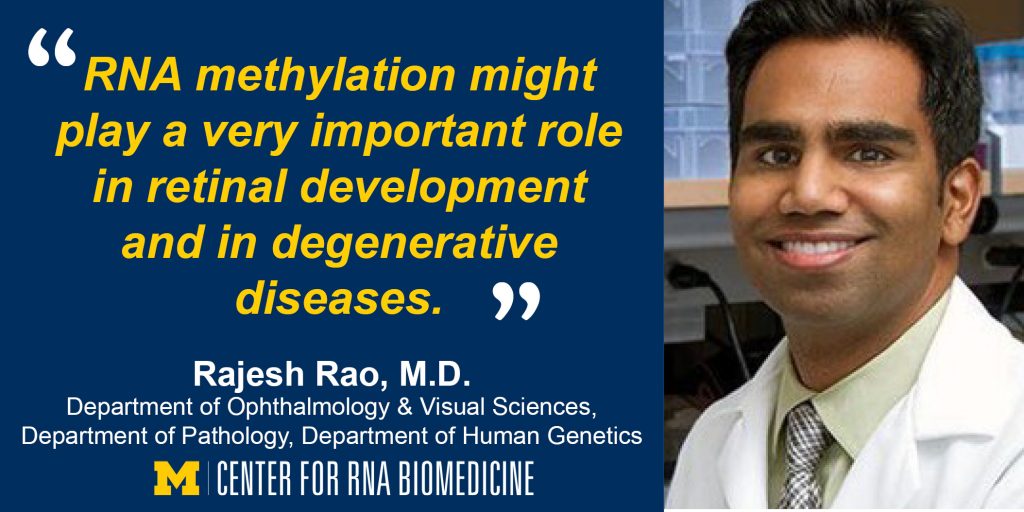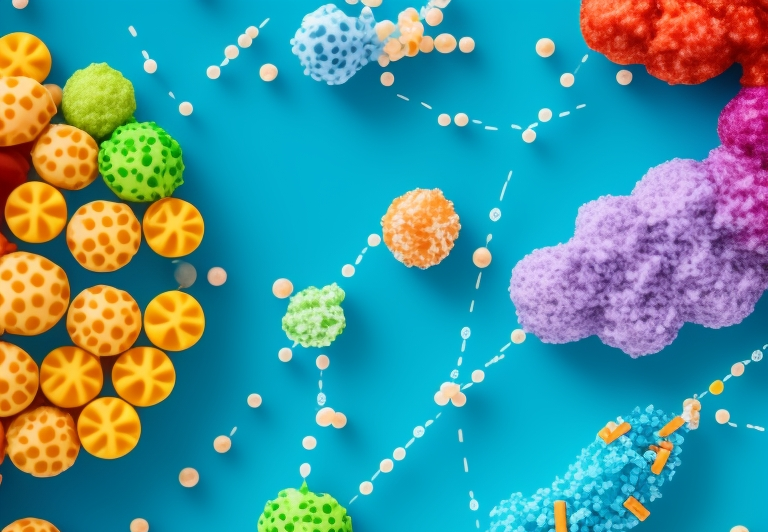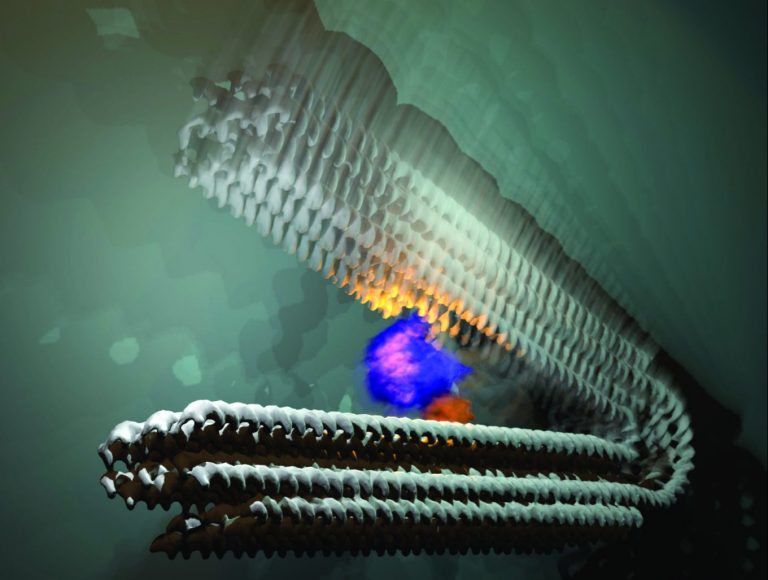Rajesh Rao, Michigan Medicine

Rajesh Rao, M.D.
Leonard G Miller Professor of Ophthalmology and Visual Sciences
Associate Professor of Ophthalmology and Visual Sciences
Associate Professor of Pathology
Associate Professor of Human Genetics
Medical School
Website
Dr. Rao is interested in the mechanisms that control the normal development of stem cells into retinal cells, and how they are involved in retinal diseases. Two retinal diseases cause irreversible blindness: age-related macular degeneration and diabetic retinopathy. In the U.S. only, there are about 10 to 11 million patients with macular degeneration, out of which 2 million have a blinding condition. Diabetic retinopathy affects about seven million patients. These retinal diseases are just as common as cancers, but there are very few or no therapy at all for them.
Dr. Rao works at both sides of the research spectrum. On one end, he studies the basic RNA transcription mechanisms in pluripotent stem cells that become either retinal cells, or specialized cells such as cones and receptors. On the other end, as a clinician, he collaborates with the Neural Stem Cell Institute, in Rensselaer, NY, in a clinical trial for advanced macular degeneration. The team creates and implants differentiated stem cells that become retina cells in these patients.
What is the role of RNA in your research?
“RNA modification in eye development is still poorly understood,” explained Dr. Rao who investigates the epigenomic and epitranscriptomic development of retinal cells, using stem cell models. Using nanopore sequencing, his team studies the RNA modifications that occur with diseases and during retinal development in human and mouse retinal mini-organs (organoids) derived from pluripotent stem cells. His team is also exploring differences in RNA methylation in retinal tissue from diabetic mice. Diabetic retinopathy is the most common cause of blindness in Americans of working age. In addition his team found that some key enzymes that are responsible for RNA methylation are also required for the retinal differentiation of pluripotent stem cells. They are also exploring other potential regulatory functions of classical RNA methyltransferase enzymes, that are potentially independent of RNA methylation.
Is there a metaphor to explain your research?
Imagine stem cells like kids who want to be “something when they grow up,” such as a scientist, teacher, doctor, business person, etc. When they are kids, they can go down almost any road and become anything, just like a stem cell can become any kind of tissue in the body. In our case we are coaxing stem cells to become retina, in order to model disease, understand basic mechanisms, or to replace cells that are lost in disease but which do not normally regenerated. To “become something” kids need guidance and instruction. In our case we are trying to understand transcriptional (RNA) mechanisms to turn the “right genes” on and off, i.e. in order for stem cells to become retina. One way to regulate transcription is to alter RNA stability by methylation. So, in short we are learning how stem cells become retina similar to learning how kids choose what they want to be when the “grow up.”
Who/what brought you to science?
While Dr. Rao was an undergraduate student at the University of Wisconsin, human embryonic stem cells were making the headlines in the media. As a freshman, he became very interested in the potential of stem cells to study very early points of development, and how they could be used to replace tissues in the brain and eye which don’t regenerate themselves in disease. This deep interest led him into medicine.
Dr. Rao has focused on epigenetics for a long time –e.g. DNA and histone methylation, and demethylation. However, “RNA and epitranscriptomics arenewer fields of investigation in which very little has been done so far in vision science. There is a real chance for us to make an impact,” he said. “We have already found some potent effects on cell fate of specific RNA methylation enzymes and readers in our stem cell-to-retina mini-organ studies, giving us clues that RNA methylation might play a key role in retinal development and in blinding disorders.”
What brought you to the University of Michigan?
The University of Michigan has a very strong group of faculty in the epigenetics field in the Departments of Pathology, of Ophthalmology, Human Genetics and in other departments and schools. The ability to collaborate and bridge pathology and human genetics with visual science was very appealing in coming to Michigan. Since then, an exciting area in epigenetics research, epitranscriptomics, has benefited from many technical and mechanistic advances. The breadth of research and expertise at Michigan made this transition of shifting our focus from chromatin to RNA modifications easy. The Center for RNA Biomedicine also facilitates collaborations within the RNA research community.
What advice would you give to students who’d like to get more involved in research?
“Keep an open mind!” Dr. Rao also recommends reading widely and being informed of the new trends in science and medicine. Living through COVID, RNA biology is proving invaluable in solving this pandemic. “RNA is an extremely interesting field, still understudied compared to other areas, but it is already making a huge difference in therapy. In ophthalmology, there are many diseases without any treatment, and RNA-based therapies could provide novel therapies to some of our toughest, blinding diseases.”
Are there any opportunities for students to engage in your projects, currently or in the future?
If you are interested in stem cells, gene editing, and RNA methylation, there is definitely a space for students and young scientists to make an impact in the field of vision science. Dr. Rao would be pleased to have students and post-docs come and visit his lab.
What profession other than your own would you enjoy, or what is your favorite hobby?
Dr. Rao has a family with young children who love being in water, at the pool or by Lake Michigan.


